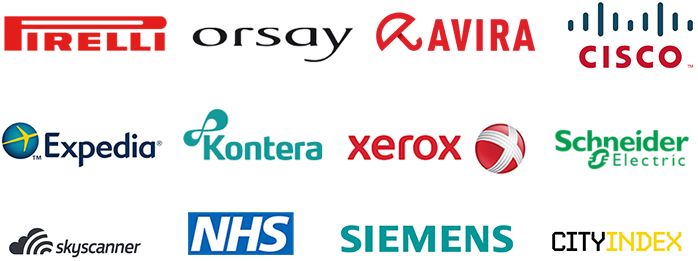There is a wide variety of project planning approaches to choose from. Some of us like lists, others prefer a calendar, while yet another group values progress visualization over all else. The last group will likely be familiar with the Kanban method, which asks that you split your work into categories (e.g., backlog, in progress, done) and place task cards into the category they fall under at the time.

Such process visualization gives you a birdseye view of all your tasks, while helping you pinpoint which item will be the most important to tackle right now. Your efficiency can be additionally aided with Kanban's characteristic work in progress limits. Using a limit promotes bringing the started tasks to an end before commencing work on new ones, which typically means a higher task completion speed.
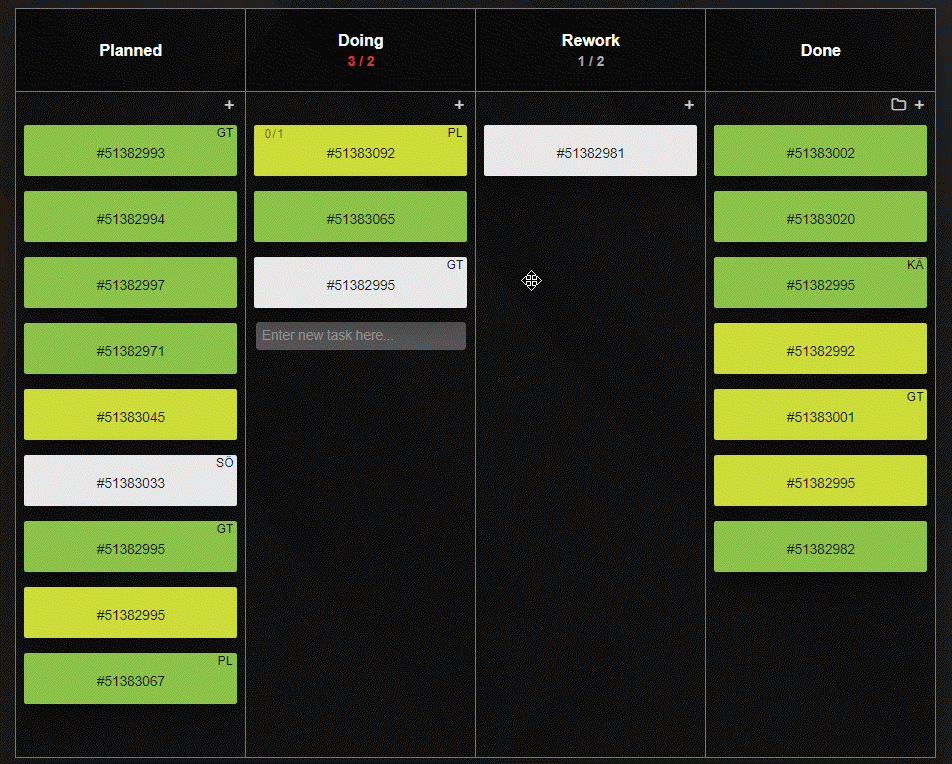
But, if a visual Kanban board centers around task completion stages, does it have room for due dates management? Absolutely! If your process - in part or as a whole - relies on sticking to due dates, you can easily incorporate them into the Kanban board.
Option 1: Kanban first, due dates supplemental
The best way to do it is to show the planned due date on tasks. If you're using a virtual cloud-based Kanban Tool board, you'll get the choice of what type of information the cards can display. The cards will give you a countdown to the required completion date, making it clear which tasks need immediate attention.
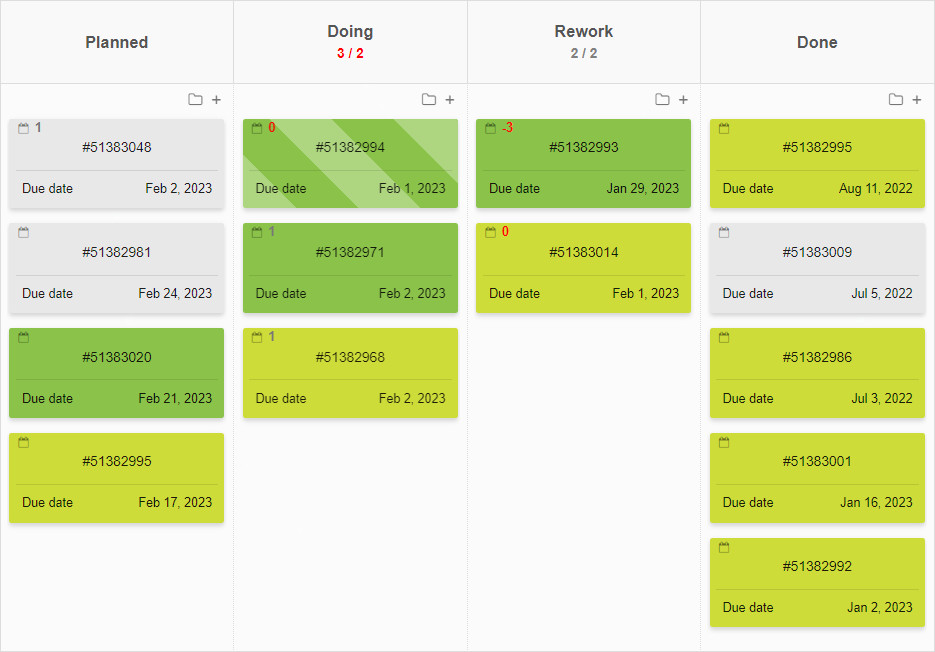
On top of this, all of the tasks' due dates will show up in the calendar widget, giving you the option to either stick with the process-centered view and follow Kanban's first-in-first-out rule for the next task selection or to let the calendar determine your work planning and monitoring.
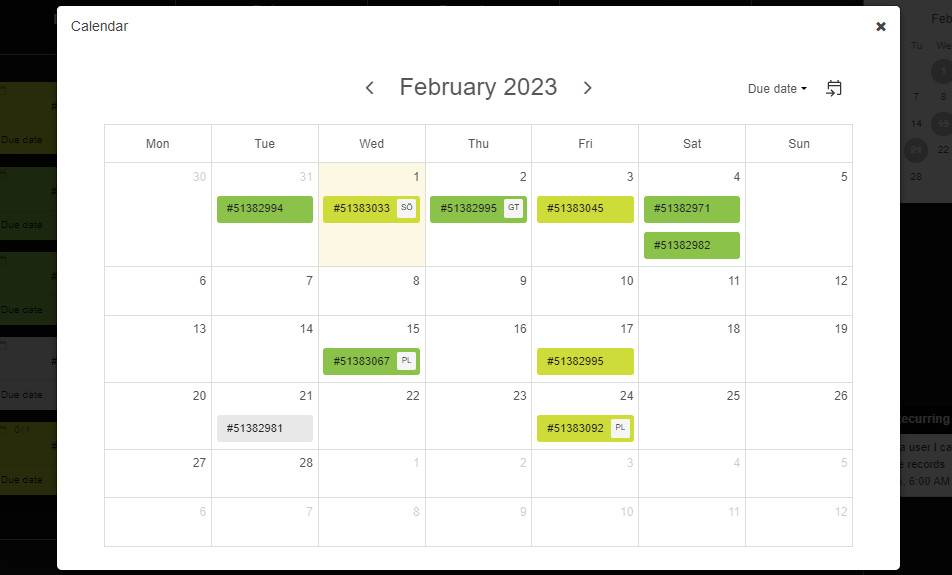
Option 2: Kanban's time-driven flavor
Another possibility to bring the needed-by information visually into the workflow is to make the process stages - columns - refer to the needed completion time. A time-driven Kanban board like this could have a layout similar to that shown on the image below. With a flow along these lines, you'd be doing Kanban since you can tell which tasks got started and which haven't, but you'll also add a layer of information about when each task needs looking at.
Of course, taking this approach still allows you to use task' due dates and the calendar widget!
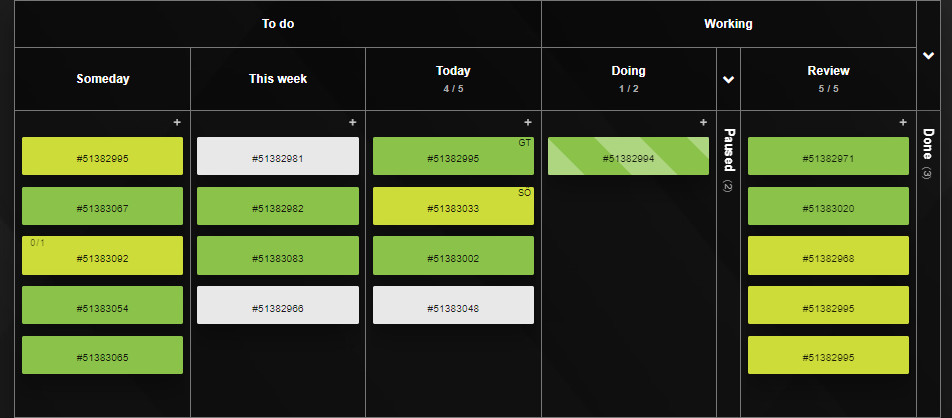
Option 3: Kanban as a calendar
The last proposition is a direct recreation of a calendar view on the Kanban board, with days of the week or whole consecutive weeks standing for columns. You could also use the board's horizontal rows to signal weeks or months (if your columns already represented weeks).
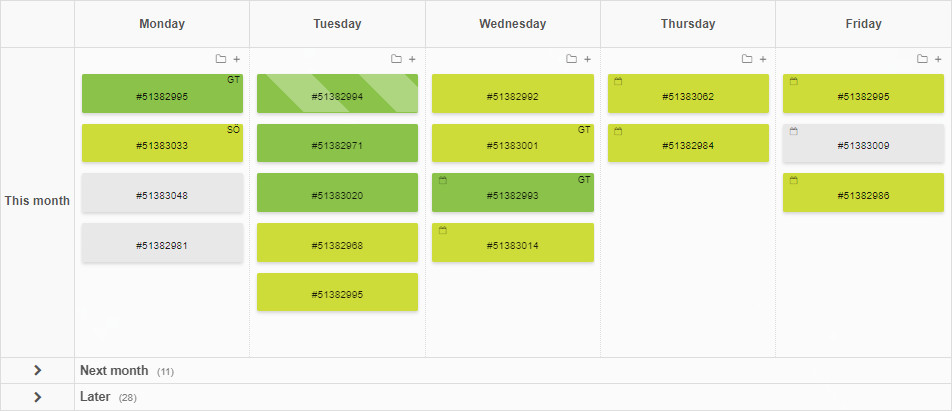
Although by adopting this method, you'd move away from the core ideas behind Kanban, you could still reap the benefits of the highly visual approach with the added advantage of WIP limits, task assignments to others, file attachments to cards, and all other additional features supported in online Kanban tools, like recurring cards, task dependencies or integrations with other apps.
Some of the key benefits of using the combination of Kanban and a calendar include:
Improved visibility: The main benefit of using Kanban is a transparent, team-wide process visualization with immediate highlights of current task states and process bottlenecks. By adding meticulous due date management to that, you're ensuring that no task, request, or problem will slip through the cracks of your process flow.
Better planning: The calendar view makes it easier to plan and prioritize tasks, ensuring that work is delivered on time and that deadlines are met.
Improved communication: Your team can easily communicate and coordinate work by using Kanban with due dates, as it provides a clear and concise overview of work items and their status.
Increased efficiency: By using Kanban and a calendar, you can better manage the workload, reduce waste, and improve your overall efficiency.
Try the Kanban-calendar approach that works best for your needs! You can test and further customize each of the above examples in Kanban Tool. The Kanban Tool service provides a simple and intuitive way to schedule and manage tasks, ensuring that your projects are delivered on time and that your team is working effectively.






